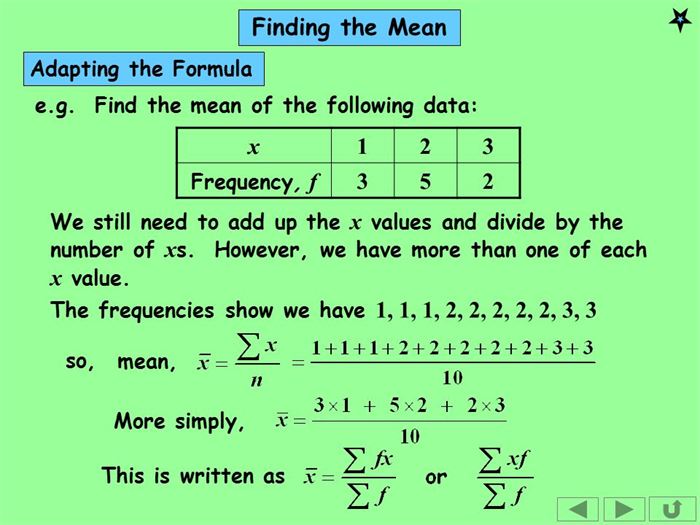Welcome to our comprehensive guide on how to find mean, also known as the average, of a set of numbers. Whether you are a student trying to solve a math problem or a data analyst looking for the central tendency of a dataset, finding the mean is a crucial skill. In this article, we will explain the concept of mean and provide you with step-by-step instructions on how to calculate it. By the end, you will have a thorough understanding of this important statistical measure and be able to easily find the mean for any given set of numbers. Let’s dive in!
Uncovering the Mean: A Step-by-Step Guide to Finding the Average

The mean, also known as the average, is a common measure of central tendency used in data analysis. It represents the sum of all values in a dataset divided by the total number of values. Finding the mean is a simple and useful tool for summarizing and understanding a set of data. In this guide, we will walk you through the step-by-step process of uncovering the mean in a dataset.
Step 1: Collect your data
The first step in finding the mean is to gather all the relevant data. This could be in the form of numbers, measurements, or any other quantitative values. Make sure that your data is accurate and complete, as any missing or incorrect values can affect the mean.
Step 2: Organize the data
Next, organize your data in ascending or descending order. This will help you identify any outliers or unusual values that may need to be removed from the dataset. It will also make it easier to calculate the mean in the next steps.
Step 3: Add up all the values
To find the mean, you need to add up all the values in your dataset. This sum will be used in the next step to calculate the mean.
Step 4: Count the number of values
Next, count the total number of values in your dataset. This will be used in the final step to divide the sum of all values.
Step 5: Calculate the mean
To calculate the mean, divide the sum of all values by the total number of values. This will give you the average value of the dataset.
Step 6: Interpret the mean
Once you have calculated the mean, it is important to interpret its meaning in the context of your data. Is the mean a representative value for the entire dataset? Does it accurately reflect the distribution of values?
Step 7: Consider the effect of outliers
Outliers, or extreme values, can greatly affect the mean. If your dataset contains any outliers, it may be necessary to remove them before calculating the mean. However, this decision should be made carefully and with consideration of the overall purpose of the data analysis.
Step 8: Compare to other measures of central tendency
The mean is just one measure of central tendency. It is important to also consider other measures such as the median and mode, as they may provide different insights into the data.
Step 9: Use the mean to make conclusions
The mean can be used to make conclusions and predictions about the dataset. It can also be compared to other datasets to identify similarities or differences.
In conclusion, finding the mean is a simple yet powerful tool in data analysis. By following these steps, you can uncover the average value of a dataset and use it to gain insights and make informed decisions. Remember to always consider the context of your data and the effects of outliers when interpreting the mean.In conclusion, learning how to find the mean is an important skill in data analysis and can greatly benefit your SEO efforts. By understanding the concept and methods of finding the mean, you can accurately measure and analyze your website’s performance, making informed decisions to improve your search engine rankings. Incorporate this valuable skill into your SEO strategy and see the positive impact it has on your website’s visibility and success. Start implementing these techniques today and watch your website’s mean performance soar.